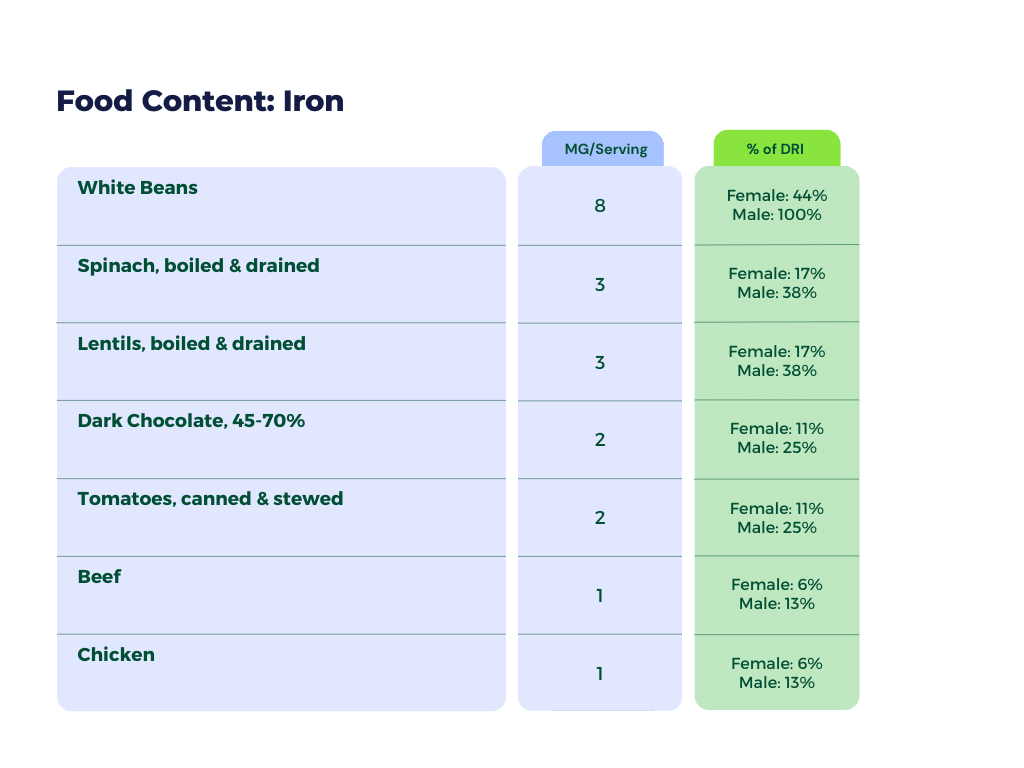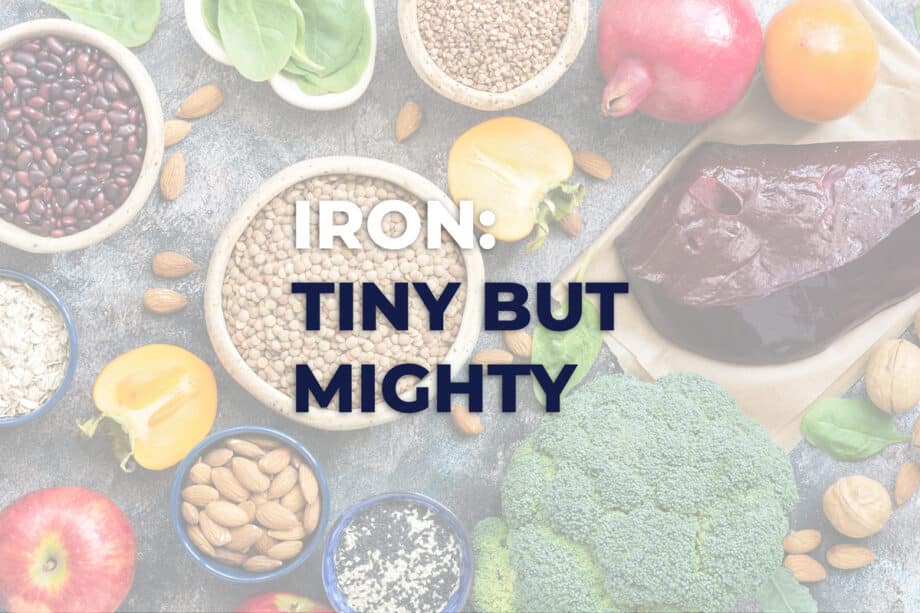Is it true that some of the most substantive minerals in our bodies function on the smallest doses? Well…YES! The amount needed does not reflect importance. Trace minerals support wellness. The most abundant trace mineral—Iron—shows their vitality.
What Is Iron?
It is an essential trace mineral that supports the composition of the blood protein hemoglobin. Red blood cells utilize this protein when delivering oxygen throughout the body.
Iron & Our Bodies
This mineral supports the composition of hemoglobin—a protein that resides in all red blood cells. It supports sustained wellness throughout the body, assisting red blood cells as they deliver oxygen to all body systems. Though the list below is not exhaustive, iron supports the following body processes through oxygenation:
- Consistent Heart Rates: the body requires oxygen-rich blood to maintain steady heart rates
- Mental Energy: sufficient oxygen levels support mental focus, resilience, and stamina
- Mood Stability: involved in the synthesis of dopamine, norepinephrine, and serotonin
- Physical Energy: oxygenation allows the body to use energy efficiently to maintain endurance
- Temperature Regulation: oxygen-rich blood helps conserve and generate heat in body tissues
Because of its presence in all red blood cells—supporting hemoglobin as it oxygenates the body—iron supports hundreds of body processes. Iron is a vital trace mineral.
Daily Recommended Intake
You will find the daily recommended intake for average, healthy adults below:
- Adult Males: 8 milligrams/day
- Adult Females: 18 milligrams/day
- Males Over 50: 8 milligrams/day
- Females Over 50: 8 milligrams/day
Adult females generally require more because they lose blood during menstruation—if you menstruate, consume this mineral intentionally to support mineral sufficiency. If you have concerns about your individual mineral levels, reach out to your healthcare provider!
We can consume this mineral through omnivorous, whole food diets. Iron comes in two forms:
- Heme: found in meat, poultry, and seafood
- Non-Heme: found in dark leafy greens, legumes, nuts, seeds, and whole grains
Our bodies require heme iron, so if you follow an herbivore diet—or struggle to consume adequate amounts through your omnivorous diet—consider supplementation! Supplementation exists to close nutrient gaps. If you have concerns about your individual health as it pertains to mineral consumption and supplementation, reach out to your healthcare provider!
Natural Sources of Iron
This mineral is present in an omnivorous, whole food diet. See common, natural iron sources in Figure 1 below:

Quick Facts
Iron supports the composition of hemoglobin, allowing for oxygen-rich blood and an oxygenated body.
- What Is Iron: trace mineral present in all human cells
- What Does It Do: supports the composition of hemoglobin
- How Much Do I Need: menstruating adults—18mg/day & non menstruating adults—8mg/day
- Natural Sources: meat, poultry, seafood, greens, legumes, seeds, and whole grains

